- HubPages»
- Pets and Animals»
- Dogs & Dog Breeds»
- Dog Training
Dog Training Tips: Housebreaking
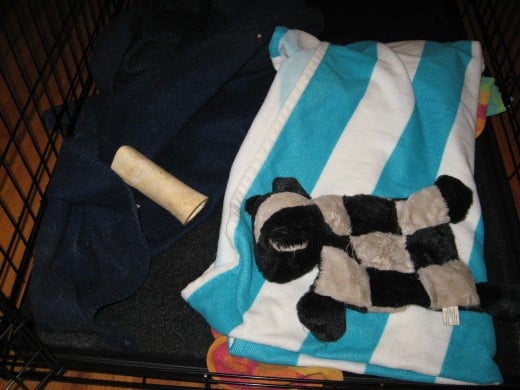
Dog Training
Today, I’m offering you some dog training tips for housebreaking and dog crate training. I used to be a dog trainer, and I’ve trained and worked with many canines over the years, from Chihuahuas to bird dogs to Great Danes, along with numerous other breeds. One aspect of this training was crate training. Crate training dogs is one of the easiest methods of housebreaking, and if your dog or puppy is an inside dog, or even if it’s an outside dog that spends some time in the house with its human family, the pooch needs to be potty trained, right? I’m sure most dog owners will readily agree on how important this is in dog training. I currently have two huge Great Danes that share my house, and I’m elated that I don’t have to clean up those gargantuan piles. Thank goodness for housebreaking success! Right now, I’m in the process of training a new dog, and I’m using dog crate training. If you’re interested, I’ve provided some dog training tips below that you might find helpful.
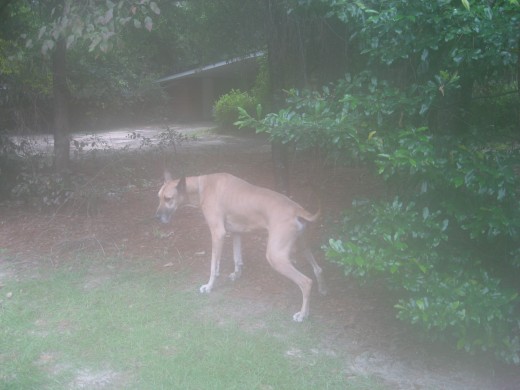
Housebreaking
As a dog owner, one of the first things you’ll probably want to do as far as dog training goes is housebreaking. Who wants their home to become a giant canine potty? House training dogs teaches them to “hold it” while they’re indoors and to alert you when they need to go out. I’ve learned from experience that housebreaking is a heck of a lot easier with some dogs than it is with others. For example, when my Great Dane, Hamlet, was a puppy, he was super easy to train. When we got another Dane, Grendel, a few months later, I think Grendel learned a lot about “going” outside from Hammie. Both big boys were extremely easy to potty train, and I never even had to use a dog crate.
Ease or difficulty in training isn’t just related to intelligence, either. Some very smart dogs are just plain stubborn and willful. It’s also important to realize that with puppies, accidents aren’t always their fault. They don’t have a lot of control over their bladder and intestines until they get older, so keep that in mind when house training dogs that are still very young.
I don’t believe in punishing dogs for “going” indoors. They don’t do it to be bad – they do it because they don’t know any better. It’s your job to teach them, and you have to be consistent. You also need to be firm but gentle. Punishing a dog for pooping or peeing indoors will only confuse it, and it could very well turn the dog into a scared, fearful canine.
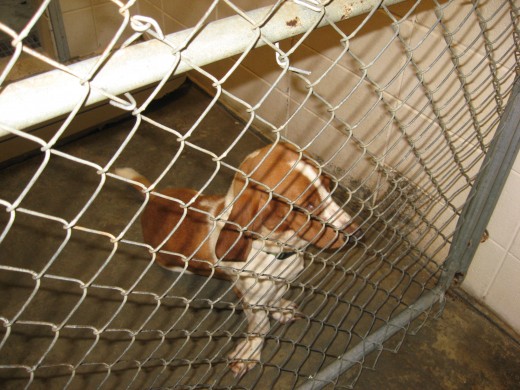
Housebreaking an Older Dog
Housebreaking an older dog differs a little from housebreaking a puppy. Think of it this way: As far as dog training is concerned, puppies are a blank slate, while older dogs already have established habits and behavior. You’ll have to “undo” some of the bad habits and establish new good ones. One advantage to housebreaking an older dog, however, is that it will have more control of its body functions than a puppy will.
If you adopt or purchase an adult dog, it might have been house trained at some point in the past, but it might have forgotten its training. This might be especially true if the dog has been in a kennel or animal shelter before you got it, where it had little choice in its bathroom habits. If that’s the case, you’ll need to start from square one. Actually, I’m in the process of housebreaking an older dog right now. We adopted Buford T. Sparkplug, a Basset hound, from our local shelter last week. Sparky is three or four years old, according to our vet. He always pees outdoors, but he’s had several poop accidents in the house. To remedy this behavior, we’re using dog crate training, and it’s working well.
Crate Training an Older Dog:
Dog Crate Training
Dog crate training is often imperative for indoor canines. The reasoning behind crate training is that it appeals to a canine’s natural instincts. Domestic dogs still have some of those “inner voices” from their ancestors who lived in the wild. Wolves and other wild canines like having cozy dens. They use the dens for sleeping, for hiding, for raising their young, and sometimes for eating. A dog crate can serve as your pooch’s den.
Why does dog crate training work? Again, it’s associated with instinct. A canine doesn’t like to soil its den, so if it establishes its dog crate as its den, it won’t want to mess it up with urine or feces. The key to successful crate training is to help your pet learn to see the crate as its own special place, a retreat away from humans and other household pets.
Dog crates should never be used as a form of punishment. Canines need to think of dog crates as good spots, and it’s up to you to establish this way of thinking. If you don’t handle dog crate training properly, your dog will come to hate its crate. The right introduction to the cage is the first step in proper crate training.
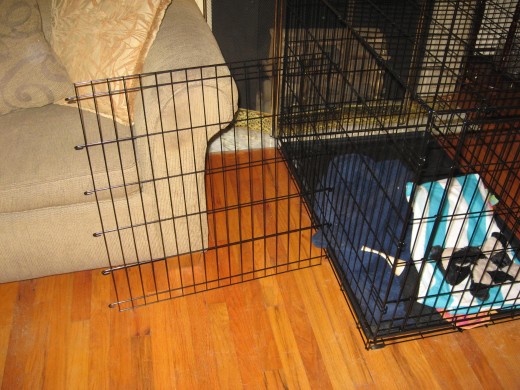
How to Crate Train a Dog
How to crate train a dog starts with choosing the right dog crate. The cage needs to be the right size – large enough for the dog to be able to stand, turn around, stretch out to sleep, and have a little room for toys and chews. You want the pet to be comfortable, but you don’t want it to have too much space. For example, if you put a Chihuahua in a Great Dane-size crate, the pint-size pooch will have too much room, so it might choose a far corner of the cage to use as a potty area. When you’re choosing a crate for a puppy, consider how large the pup will be once it’s grown. Will the cage still be large enough? You might want to consider getting a cage with a removable partition. That way, you can partition off a small area for the puppy, and when it grows larger, you can remove the partition.
Once you’ve purchased a cage, the next step in how to crate train a dog starts with introducing the pet to its den. Some dogs are more curious than others, and such canines might immediately bound into the crate to check it out. On the other hand, some dogs might be a little afraid of the new object. A good strategy is to leave the crate in an area where the family spends a lot of time. Leave the door to the cage open, and place a bed or blanket inside, along with a couple of toys. Most dogs will enter the crate to get the toys, but for those that won’t, use a very gradual strategy. Teach the dog to associate the crate with something positive. You can start by placing dog treats near the cage, then just inside the cage, and finally, near the back of the cage. Allow the animal to go in and out of the crate freely for a while.
Once the dog is used to the open crate, teach it to go in the cage on demand. I use the simple command “crate” for this. I teach the dog the command by throwing a doggie treat, chew, or toy into the cage. When the dog learns the command, I begin closing the cage door for short periods of time. As the dog becomes used to being shut up in the crate, I gradually lengthen the time periods.
How to Crate Train a Dog:
Crate Training Tips
Now, for some more specific crate training tips. Most dogs have to relieve themselves several times a day, and some of these times are pretty easy to figure out. For example, a dog that’s been crated all night will most assuredly have to go out when first waking up in the morning and probably after naps, too. In most animals, eating triggers peristalsis, or bowel movement, so your dog will probably need to defecate shortly after eating. Exercise will often do the same thing, so take the dog out after any vigorous play or physical activity. Of course, you’ll also need to take the pooch for a potty break just before bedtime at night, too.
You’ll need a command for going out to potty. I use “out.” When the dog “goes” outdoors, praise it. Next time you take it out to potty, take it to the same spot. If you have another dog in the house that’s potty trained, you might try taking the new dog to potty in or near the same outdoor bathroom used by the trained dog. This works well with Sparky. He likes to sniff around and find out where Hamlet and Grendel have been “going” and leave a “deposit” himself.
Indoor accidents are bound to happen, so don’t get upset when they do. Just clean it up and continue with your housebreaking routine, with “routine” being the key word here. You need to establish a regular routine that your dog can get used to and count on. And, by the way, when you clean up doggie pee or poop, clean the area thoroughly. If the dog can still smell the spot, it will most likely try to “go” there again.
While pet dog is still learning dog crate training, watch it like a hawk when it’s out of the cage. Most canines will provide you with hints when they have to relieve themselves. These might include sniffing around on the floor or walking in circles.Try to stop the dog before the act is completed and take it outside. After it’s peed or pooped is probably a safe time for allowing it some time out of its cage in the house. Don’t leave the poor dog in the crate all the time. Canines need plenty of exercise, socialization with humans, and interaction with other pets.
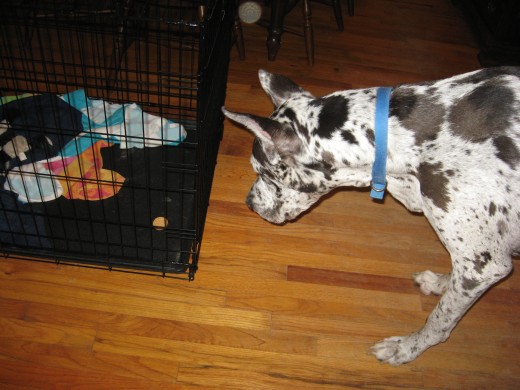
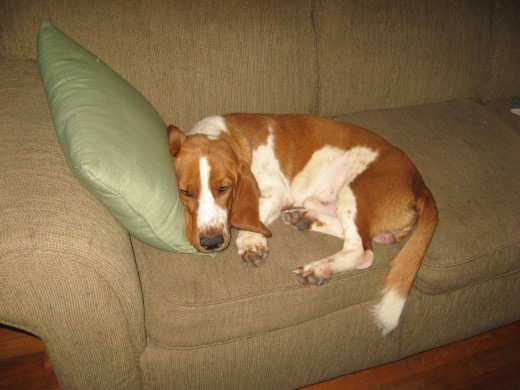
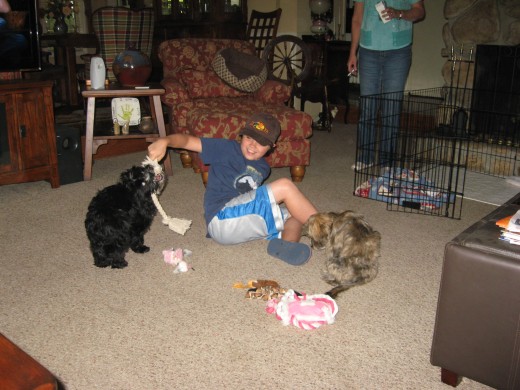
Best Dog Crates
What are the best dog crates? I can’t tell you how many times I’ve been asked that question. I think the answer depends on the individual dog, the owner, and the circumstances. For example, the best dog crates for people who travel frequently with their pets might not be the best dog crates for pet owners who plan to leave their crates set up in the same spot indefinitely.
There are all sorts of dog crates available, including wire crates or cages, plastic crates, and soft crates made of fabric. You can even find models that roll, with wheels attached to the bottom. Some crates also have bottom trays that can be removed for cleaning, and as I’ve already mentioned, there are models with removable partitions. Also, some dog crates are much more portable than others are.
When you’re trying to decide on the best dog crates, don’t shop from right to left. In other words, don’t let price be the only criterion. A crate is a long term investment that should provide you with years of service, and the best dog crates will do just that.
Each type of dog crate has its advantages and disadvantages, so you’ll need to weigh these carefully. Consider your home environment when making your choice. For example, if you have big dogs in the house, or rough-and-tumble kids, you might prefer a sturdy dog crate that can’t be easily collapsed or damaged – especially while a dog is in it. On the other hand, if you have a small non-destructive dog with no kids or other dogs in the house, a portable, lightweight crate might be best.
Wire Dog Crates or Plastic Dog Crates
Many pet owners choose either wire dog crates or plastic dog crates. Which are the best dog crates of these two types? That largely depends on the dog. Generally speaking, wire dog crates are more “open,” while most plastic dog crates are more enclosed. Some dogs prefer being able to see what’s going on around them while they’re in their “den,” while others might prefer more privacy, which plastic dog crates provide.
As for my personal opinion, I prefer wire cages for dog crate training. They’re sturdy, so I don’t have to worry about Sparky when he’s in his cage and the Danes or grandkids are romping around the living room. I also like the wire cage because I can check on Sparky easily without disturbing him. There’s yet another reason I like wire dog crates better – they’re less destructible than plastic dog crates are. Ol’ Sparky is a chewer, and so is one of the Great Danes, I’m pretty sure Sparky and Grendel could chew through plastic pretty quickly – one from the inside and one from the outside. I think that would make my dog training tips for housebreaking and dog crate training null and void.
The Keys to Success
The keys to successful housetraining your dog or puppy include patience and consistency. Most dogs want to please their masters, but they have to be able to understand exactly what's expected of them. If you don't make this perfectly clear to your pooch, both you and the canine will end up being frustrated, and the dog will be confused.
Don't punish your dog for something it doesn't do. Instead, reward it for what it does correctly. Punishing the dog when it doesn't understand what you want it to do is counter-productive. In fact, this course of action on your part could easily lead to the dog's becoming anxious, depressed, or even aggressive. Don't ruin a potentially wonderful pet with bad dog training methods!








